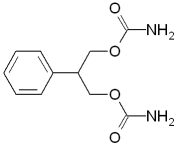How well do you really know the drugs you administer-their indications, dosages, interactions, and possible adverse effects? Test yourself with Nursing98's Drug Quiz. Just match the descriptions in Section II with the drugs in Section 1.
SECTION I
1. felbamate (Felbatol, Wallace Labs)
2. desmopressin (DDAVP, Rhone-Poulenc Rorer)
3. glimepiride (Amaryl, Hoechst-Roussel)
4. granisetron (Kytril, SmithKline Beecham)
5. vecuronium (Norcuron, Organon)
6. cefepime (Maxipime, Bristol-Myers Squibb)
7. atorvastatin (Lipitor, Parke-Davis)
SECTION II
a. Give this oral hypoglycemic once a day to a patient with Type 2 diabetes. He should take it with breakfast or the first main meal. Remind him to monitor his blood glucose regularly.
b. To prevent nausea and vomiting, administer this serotonin receptor antagonist either I.V. or orally 30 minutes before chemotherapy.
c. A physician may prescribe this lipid-lowering drug for patients who have elevated total and low-density lipoproteins or elevated triglycerides. Like other HMG-CoA reductase inhibitors, it can cause myopathy or liver dysfunction.
d. When giving this broad-spectrum cephalosporin antibiotic I.V., dilute the dose in 50 to 100 ml of compatible I.V. fluid and administer it over 30 minutes.
e. Use this natural arginine vasopressin analog to manage central cranial diabetes insipidus. The drug sometimes elevates blood pressure, so monitor your patient frequently during therapy.
f. This oral anticonvulsant controls partial seizures and Lennox-Gastaut syndrome in children. Because the drug causes photosensitivity, advise your patient's parents to protect the child from sunlight or sunlamps.
g. Given to relax skeletal muscles during mechanical ventilation, this neuromuscular blocker becomes more potent when inhaled anesthetics are administered simultaneously. Monitor your patient closely until he's fully recovered from neuromuscular blockade.
ANSWERS: 1f, 2e, 3a, 4b, 5g, 6d, 7c.
Peter A. Hyams, RPh, BS, author of Drug Quiz, is assistant director of phar
macy at Temple University Hospital and adjunct associate professor at
Temple University School of Pharmacy, Philadelphia.
Copyright Springhouse Corporation Mar 1998
Provided by ProQuest Information and Learning Company. All rights Reserved



